Pagan Britain: The UK's Ancient Sacred Sites
Mythical sites for a solstice pilgrimage
The term Pagan comes from the Latin paganus—literally ‘rustic’ or ‘yokel’—used by invading Romans to denigrate pre-Christian faiths considered backwards and inferior to their own.
Little is known of these prehistoric Pagan religions, other than what can be interpreted from their mysterious monuments and relics found in all corners of the British Isles. Archeologists know there must have been a strong astronomical interest with layouts aligned with the solstices and equinoxes, ancestor worship seems to have featured prominently, as well as ominous sacrificial rituals.
Much of the rest of our understanding comes from guesswork, a vacuum which has been readily filled by millenia of romantic myth and folk legends from King Arthur onwards.
But for a country so obsessed with its origin myths, it’s surprising how little is known about Britain’s thousands of sacred Pagan sites. There are stone circles, henges, burial mounds, even an entire preserved village. Everyone knows the most famous henge, but what about the others? Read on for some of the UK’s most fascinating Pagan sacred sites.
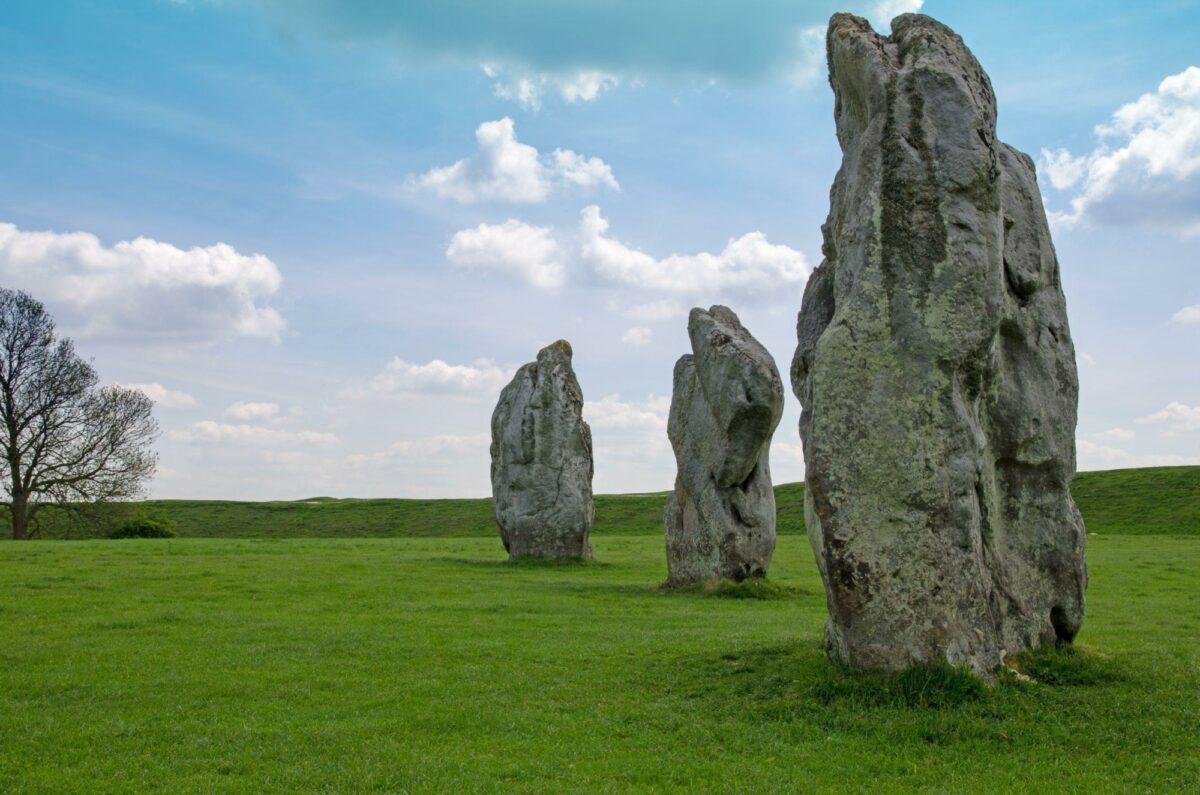
Avebury World Heritage Site, home to the world's largest prehistoric stone circle
Avebury World Heritage Site
Avebury World Heritage Site is renowned for Prehistoric and Neolithic sites that rival Stonehenge in size, range and atmosphere, if not notoriety.
The site is understood to have been of spiritual and ceremonial importance for Neolithic pilgrims. Avebury Henge, built around 2500 BC, is the world’s largest with more than 100 megalithic stones arranged in a vast circle. The Sanctuary is a particularly mysterious site, possibly connected with human sacrifice. West Kennet Long Barrow is an impressive burial chamber, being one of the largest and most detailed examples still in existence, built around 3650 BC. Windmill Hill is presumed to be a place of festival, feasting and ritual, excavated in depth throughout the early 20th century, the findings of which are on dispay in the nearby Alexander Keillor museum.
It’s recommended to start exploring Avebury at the Alexander Keillor museum, then walk between the sites, all of which are a manageable distance apart. The hike up Windmill Hill is a 1.5 mile moderate incline. Access is not permitted to Silbury Hill but the pyramid sized mound can be viewed from afar.
Avebury World Heritage Site
Avebury, Wiltshire
Free entry for all sites during daylight hours. Parking is free for English Heritage or National Trust members, who co-manage and care for the sites.
More info: www.english-heritage.org.uk/visit/places/avebury
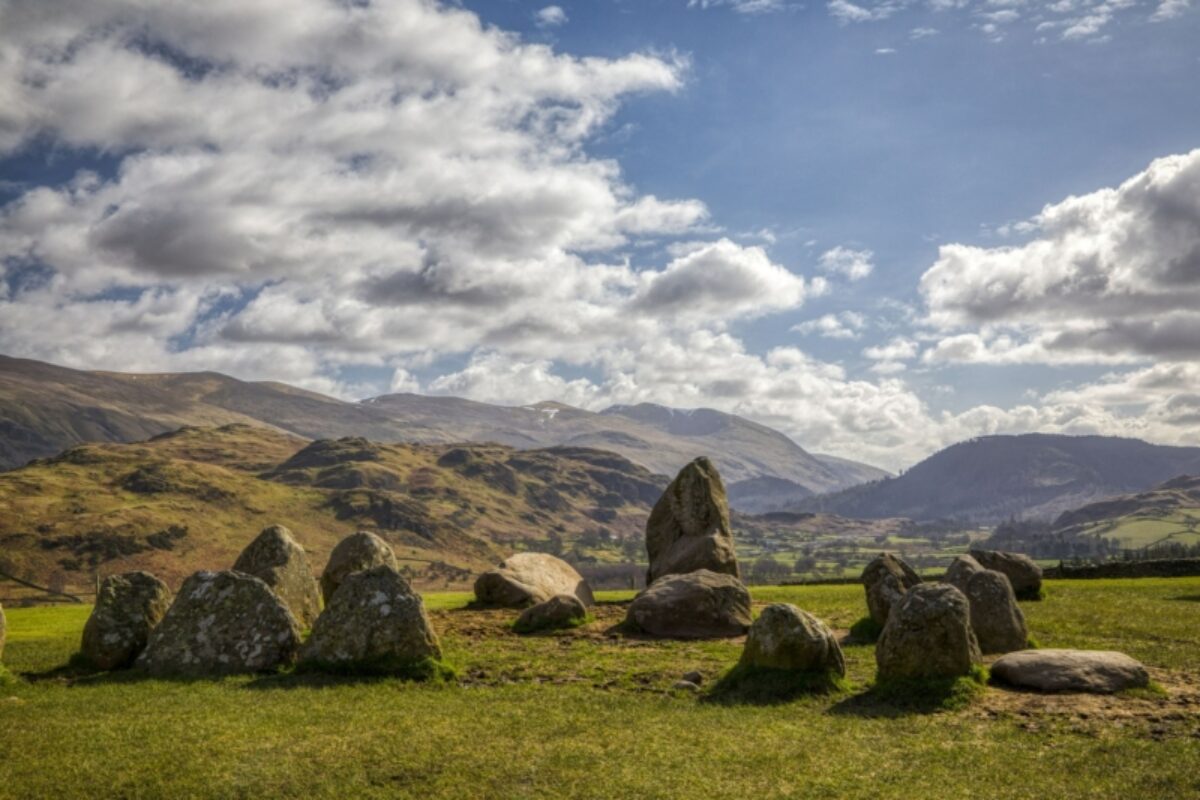
Castlerigg Stone Circle, the Lake District
Castlerigg Stone Circle
The Castlerigg Stone Circle, commanding an impressive location in northern England’s Lake District, are thought to be Britain’s oldest stone circle, dating back to 4000 - 5000 BC. The stones come with their own myth; that you can’t count the same number of stones twice, as they’ll vary in quantity on every circumnavigation. Myths aside, The National Trust lists 38 stones, some up to 10m in height, the site being one of the first ever to be purchased by the Trust in 1913.
Castlerigg Stone Circle
Keswick, England
Free Entry, 2 hour walking loop from / to Keswick town centre.
More info: www.nationaltrust.org.uk/borrowdale-and-derwent-water/features/castlerigg-stone-circle
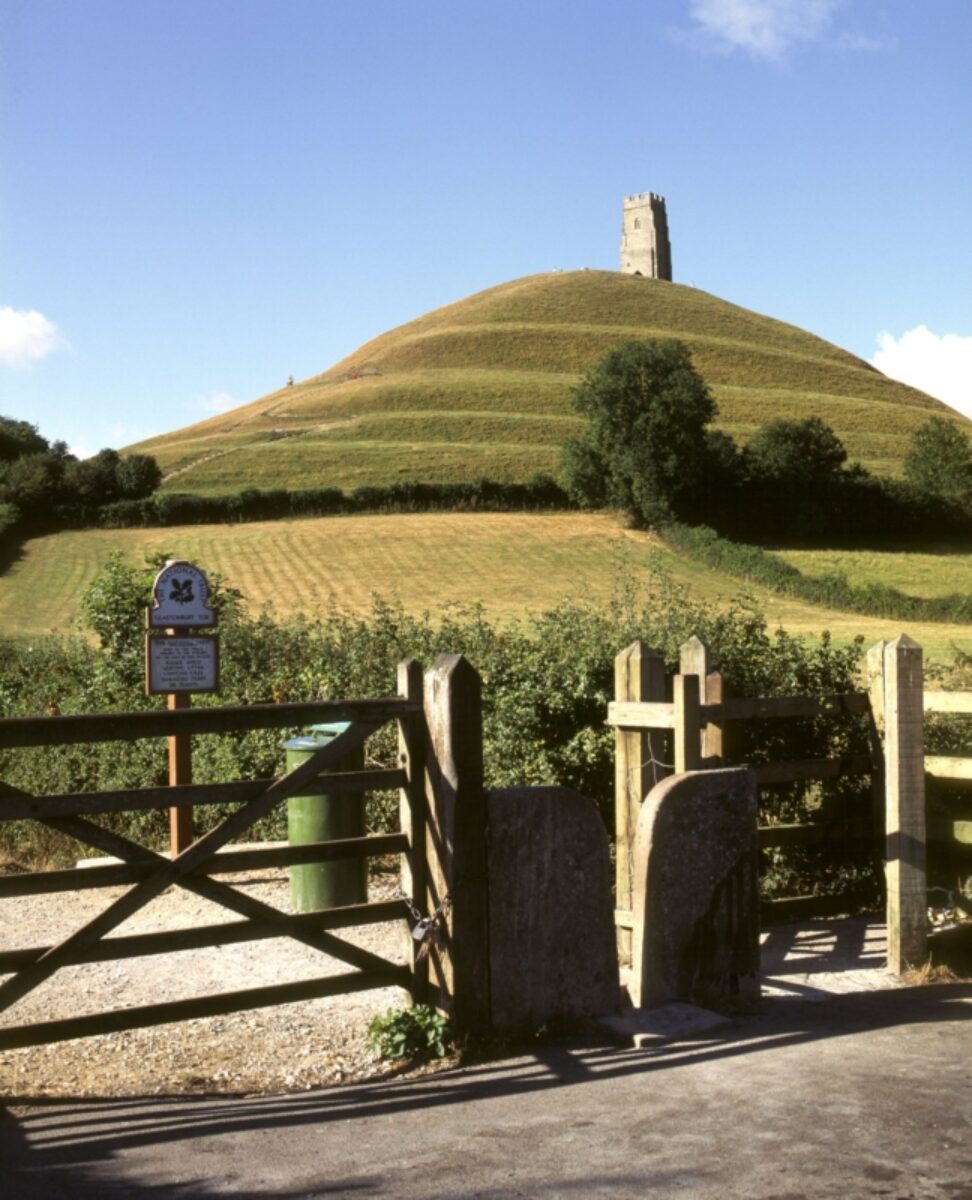
View of St Michaels Tower atop Glastonbury Tor
Glastonbury Tor
Pagan pilgrims have flocked to this hill “tor” for thousands of years, and it has been used by Celts, Romans and Christians alike. The rumours and myths around this site are lengthy, including Arthurian legend, leyline theory and even suggested ties to the Holy Grail. While the hill looks man made and pyramidical, it is in fact entirely natural and not a burial mound of any kind. Celts definitely did settle here, as Neolithic flint tools were dug up on top of the Tor, and it’s no great stretch to suggest it was a site of worship, as the Romans typically converted pagan Celtic sites into temples. It’s a scenic and satisfying walk up the partially steep hill and a fantastic site to spend the Summer Solstice.
Glastonbury Tor
Glastonbury, Somerset
Free Entry 24 hours a day
More info: www.nationaltrust.org.uk/glastonbury-tor
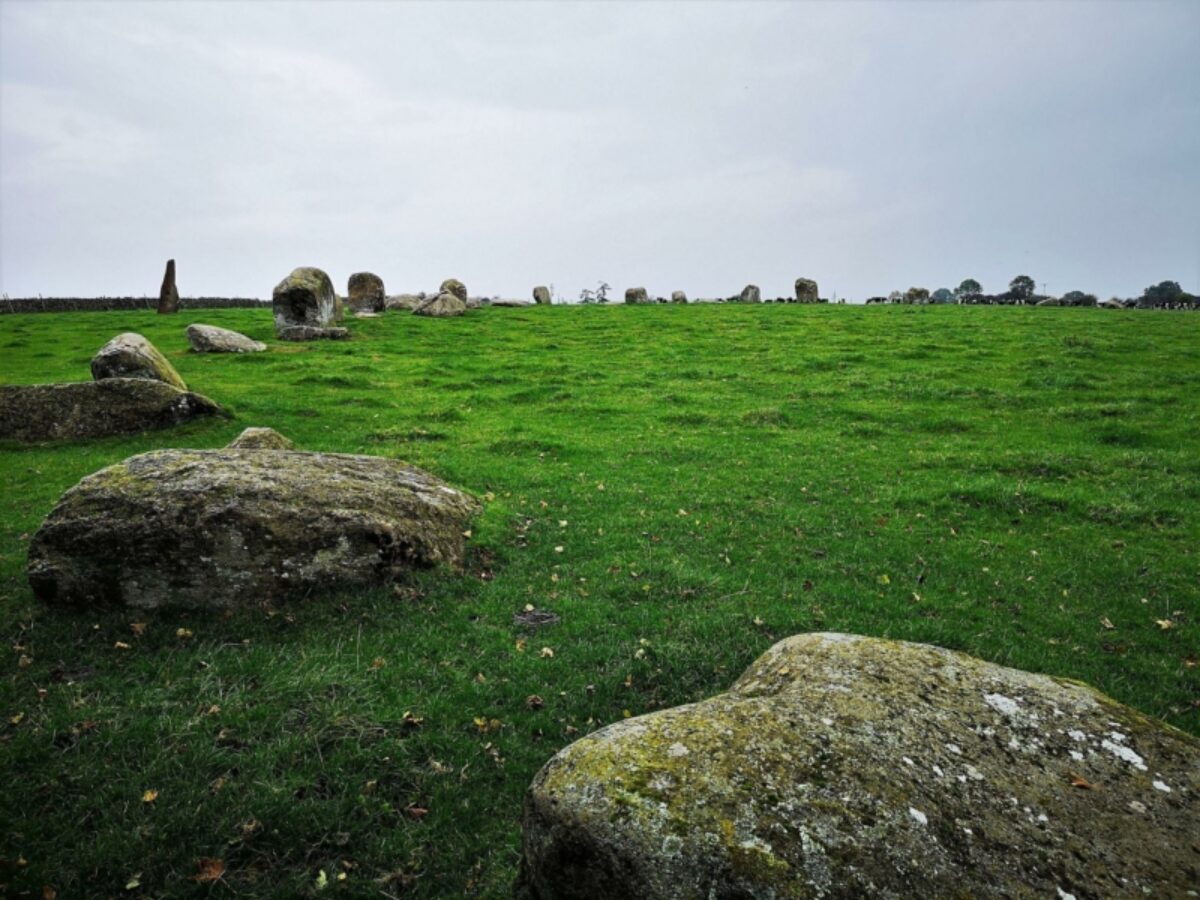
Long Meg and Her Daughters, Cumbria
Long Meg and her Daughters
The stone known as Long Meg stands tall at 12ft, surrounded by her stone daughters, in Penrith, Cumbria in the former kingdom of Cumberland. This late Neolithic / early Bronze Age stone circle of 59 (or 69) stones date to approximately 1500 BC and is another that you are challenged to count twice, as the number will supposedly differ on each tally. Long Meg is not only noteworthy in height and for inspiring the poetry of William Wordsworth, but the giant stone also displays three rare markings of Neolithic symbolism, which scholars refer to as “cup and ring” carvings.
The site is a 15 minute drive from the Penrith Junction of the A66, or a 20 minute walk from the village of Little Salkeld, just north of Penrith. Little Meg stone circle is also a short walk away.
Long Meg and her Daughters
Penrith, Cumbria
Free entry
More info: www.visitcumbria.com/evnp/long-meg-and-her-daughters/
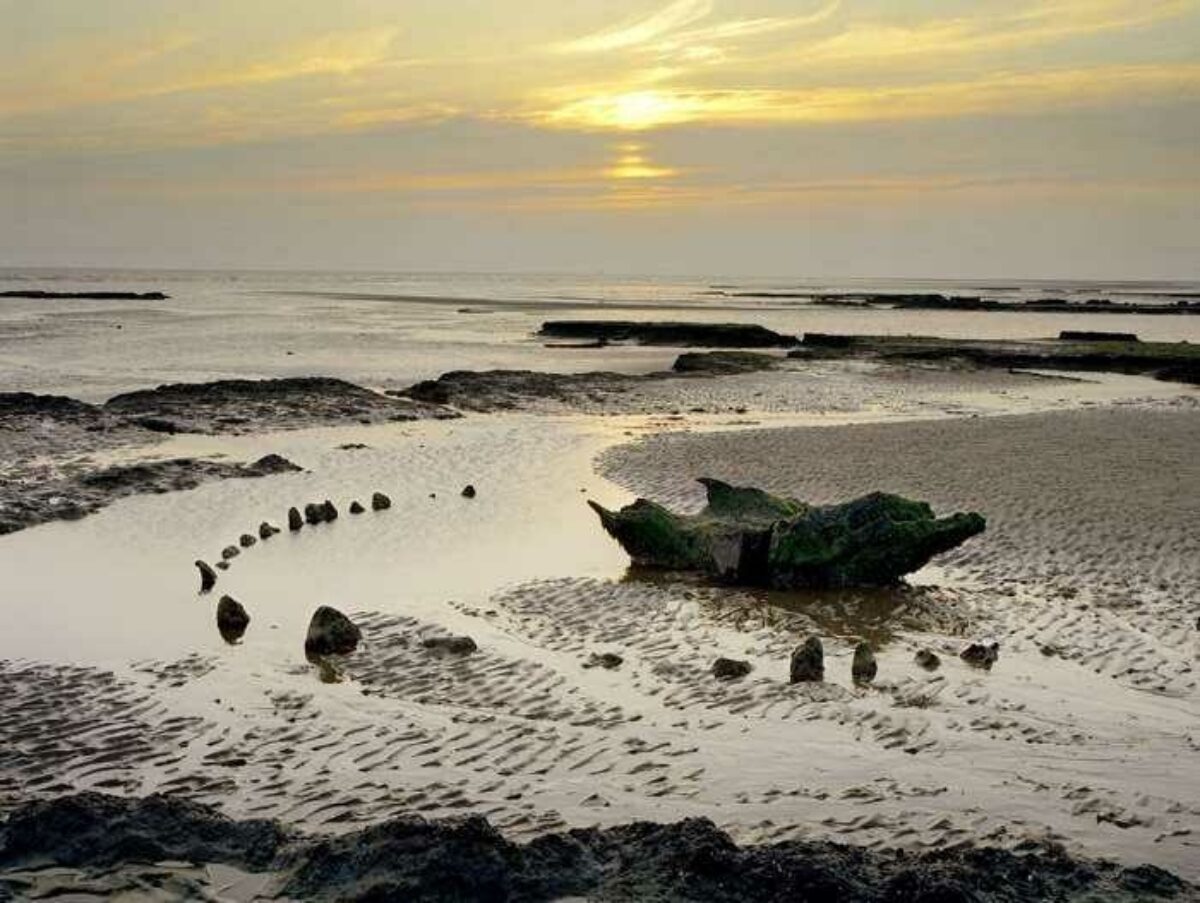
Seahenge as it originally (re)appeared on the Norfolk coast
Seahenge 1 & 2
The only wooden henges to be discovered in Britain, Seahenge 1 & 2 fascinated the public and archaeologists alike after emerging from the sea off the Norfolk coast in 1998 and 2014 respectively.
Unlike their stone circle counterparts, these circles of wooden posts were easy to date to 2050 BC and 2049 BC but their use remains a mystery, with archeologists suggesting that the structures had ceremonial funerary use.
After some controversy and protest, Seahenge 1 (aka Holme 1) was excavated, removed then treated by the same conservation team who preserve the Mary Rose, and displayed in Norfolk’s Lynn Museum, where the shape has been recreated and interpreted as best possible. Seahenge 2 emerged on Holme Beach some 16 years later and was not excavated like its counterpart, so has since been reclaimed by the silt and sea. Walk along the right stretch of the Norfolk Coast Path at low tide however and you might just see it.
Seahenge 1 & 2
Seahenge 1 can be viewed at the Lynn Museum, King's Lynn PE30 1NL. Admission is free from 1 October to 31 March. The rest of the year £4.70 for an adult ticket.
Seahenge 2 is located in the sea off Holme Beach, Hunstanton, Norfolk.
More info: www.museums.norfolk.gov.uk/lynn-museum/whats-here/seahenge
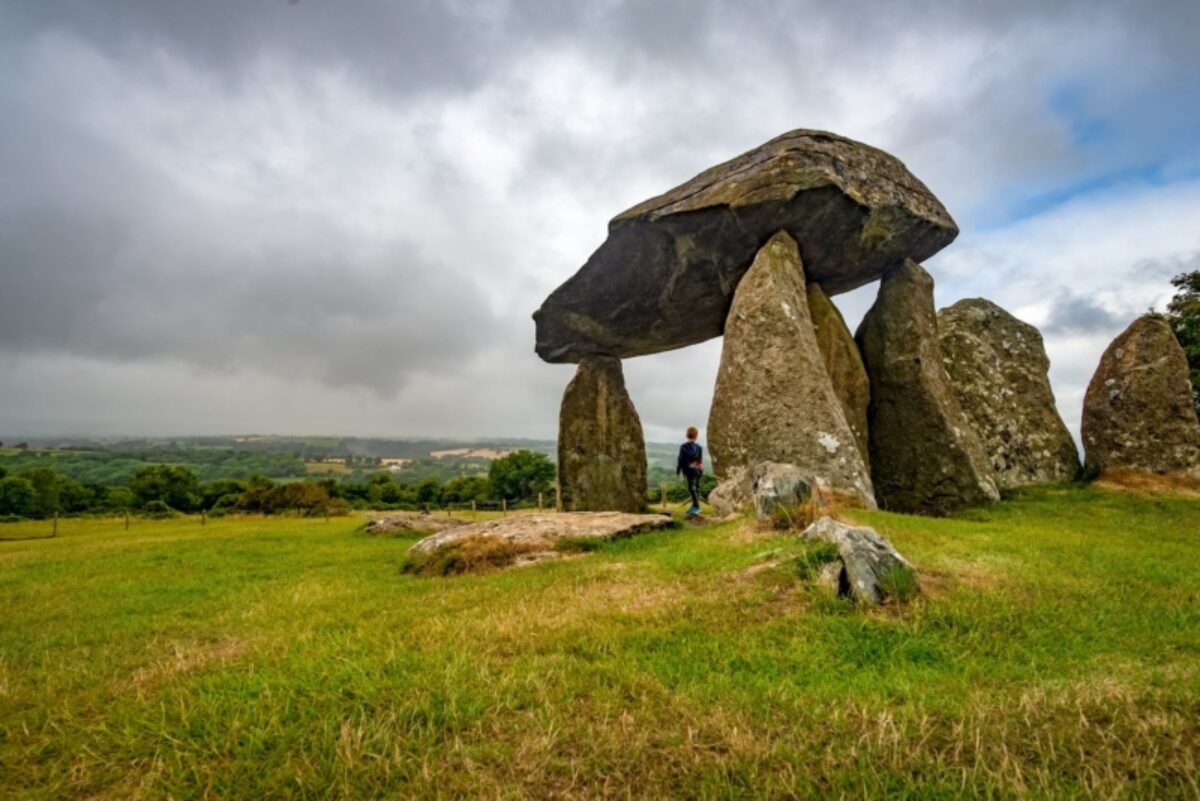
The colossal Pentre Ifan burial chamber in Pembrokeshire, Wales
Pentre Ifan burial chamber
One of a cluster of Neolithic burial sites in West Wales (with Garn Wen and Carreg Samson being a short drive away) Pentre Ifan stands out as the largest and best preserved necropolis in the region. It’s structurally impressive too, boasting a colossal and seemingly precarious stone arch entrance that sits amidst the stunning vista of Preseli Hills. These three standing stones and flat capstone have stood here for some 5,500 years, and would have been buried under a mound of earth. The stones were revealed after their excavation in 1988. Catch them at their most picturesque around sunset or sunrise.
The site is a few minutes walk from the main road, where you can park in a lay-by. Alternatively there are over 200 walks to choose from in the Pembrokeshire Coast National Park, where the stones are located. Be sure to read up on the legend of the Pentre Ifan fairies before you go.
Pentre Ifan burial chamber
Pembrokeshire, Wales
Free entry
More info: www.cadw.gov.wales/visit/places-to-visit/pentre-ifan-burial-chamber
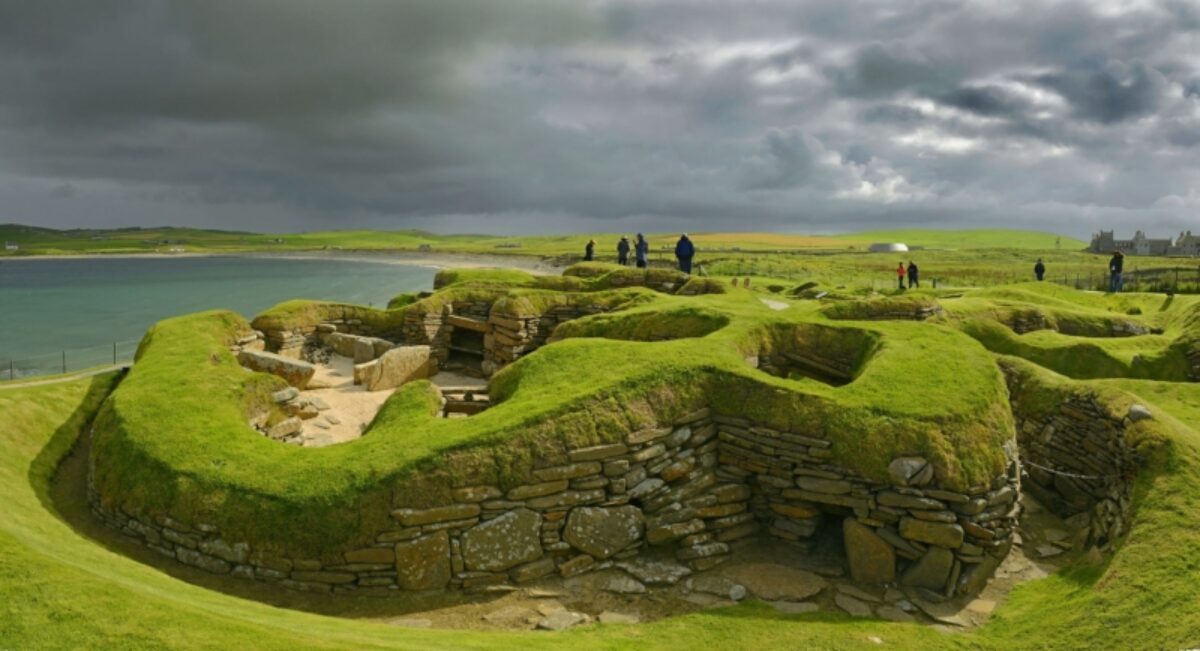
The exceptionally preserved neolithic village of Skara Brae on Orkney, Scotland
Heart of Neolithic Orkney
This world heritage site is home to four incredibly well preserved Neolithic monuments that earn them the collective name of “Heart of Neolithic Orkney”. Three of the sites are understood to have been ceremonial and spiritual in use, The Standing Stones of Stenness, The Ring of Brodgar and Maeshowe—two stone circles and a tomb respectively.
But it’s Skara Brae that stands out, the fourth site of the quartet, as the most complete and detailed Neolithic village in Europe. Squint and let the rooms transport you back 5000 years to envision the life and times of the ancient Celts.
There are three main vehicle ferry routes to and from Orkney. NorthLink Ferries sail between Lerwick in Shetland, Hatston in Kirkwall and Aberdeen. Once you reach Stenness, the sites are approximately an hour’s hiking distance from one another.
Heart of Neolithic Orkney
Located in Sandwick, Orkney
Entry to The Standing Stones of Stenness and The Ring of Brodgar is free.
Maeshowe is currently closed to the public but can be viewed from afar.
Skara Brae is free to History Environment Scotland members or £7.00 for adults.
More info: www.historicenvironment.scot/advice-and-support/listing-scheduling-and-designations/world-heritage-sites/heart-of-neolithic-orkney/
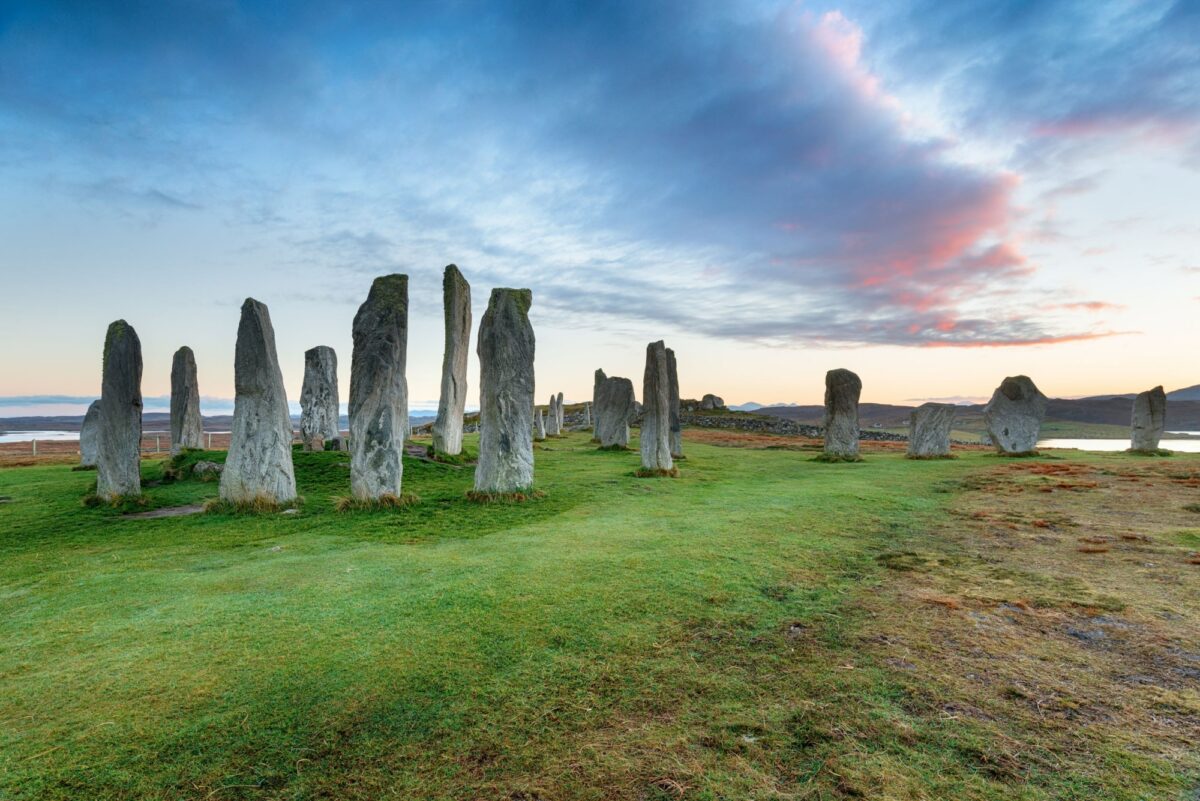
Calanais Standing Stones on Lewis, Scotland
Calanais Standing Stones
This remote stone circle in the Outer Hebrides is undoubtedly worth the pilgrimage, being unique in shape, structure and supposed use. The stones are laid out in a cross shape, the tallest of which stands proudly in the centre, looming at an impressive 4.8 metres in height. Recent archeological excavation suggests that the structure was an astronomical observatory, with lunar phenomenon greeting the stones in a cyclical 18 years. Unlike Stonehenge, you can walk between the stones unrestricted and like so many stone circles, the mythology here is abundant, with folklore suggesting that the monoliths were formerly local giants, turned to stone for rejecting Christianity.
The Calmac ferry to Lewis is from Ullapool on the Scottish mainland, which takes 2 hours 45 minutes. You can also travel from Skye to Harris and drive north. Vehicle reservations are recommended.
Calanais Standing Stones
Callanish, Isle of Lewis, Scotland
Entrance to the stones is free.
More info: www.historicenvironment.scot/visit-a-place/places/calanais-standing-stones/history/
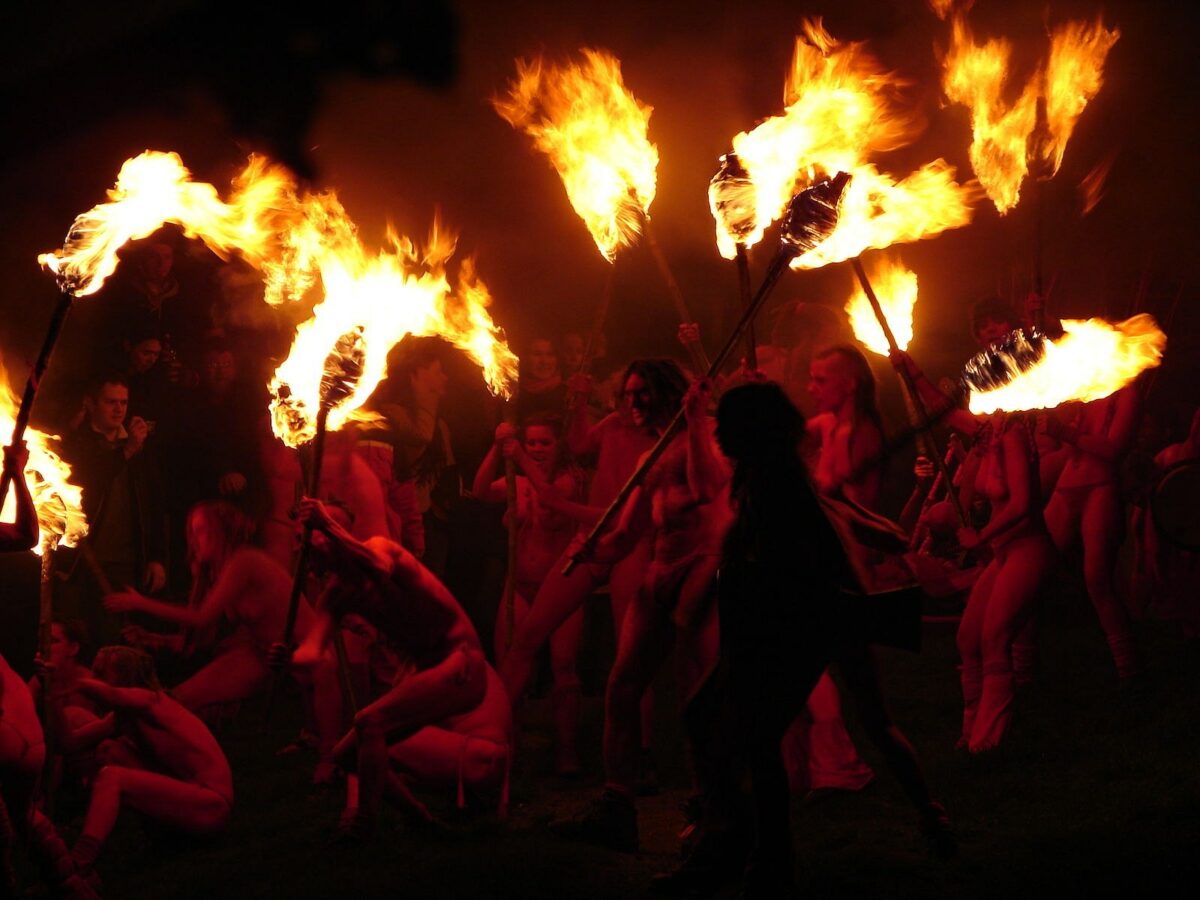
Living history at the Beltane Fire Festival
Beltane Fire Festival
If you like your history ‘living’ (who doesn’t love a jousting re-enactment) then this annual Ancient Gaelic fire festival is for you. Beltane was celebrated by Neolithic pagans to mark the end of winter and welcome the beginning of summer. Old fire hearths were extinguished and new fires lit, celebrating the fertility of the land and ceremonially blessing the livestock. The modern reimagining of the Beltane started in 1988 by students from Edinburgh University’s School of Scottish Studies. It now takes place every year on the night of 30th April, with neo-pagan performers presenting a procession then performing a fire show on Edinburgh’s Carlton Hill and serves as the most faithful celebration of pagan traditions and beliefs you’ll find in the UK.
Beltane Fire Festival
Carlton Hill, Edinburgh
This festival is free to attend but check the website for updates.
More info: www.beltane.org/about-beltane

Stonehenge is undoubtedly remarkable, but remember you'll be sharing the view
Stonehenge
And finally, no list of British ancient sites can ignore the most famous of them all. Overwhelming, underwhelming, over priced, under valued. Opinions on Stonehenge are divided and strong.
There are a number of ways to experience Stonehenge. If the hefty entrance fee and legions of tourists are an off putting thought, visiting the stones on Summer or Winter Solstice might be for you, as the tourists are replaced by thousands of pagans, hippies and spiritualists watching the sun rise on the year’s longest and shortest day respectively. Usually fenced off behind barriers, you can get up close to the stones on the solstice dates, but expect the other revellers to get equally close to you.
Otherwise on an ‘ordinary’ visit, you’ll start at the visitors centre, and take the 2.6 mile walking loop or transit bus if mobility is a challenge. Pre-booking your timed ticket is essential.
Stonehenge
Salisbury, England
09:30 - 17:00, last entry 14:00. Entrance fees: £21.50
More info: www.english-heritage.org.uk/visit/places/stonehenge





